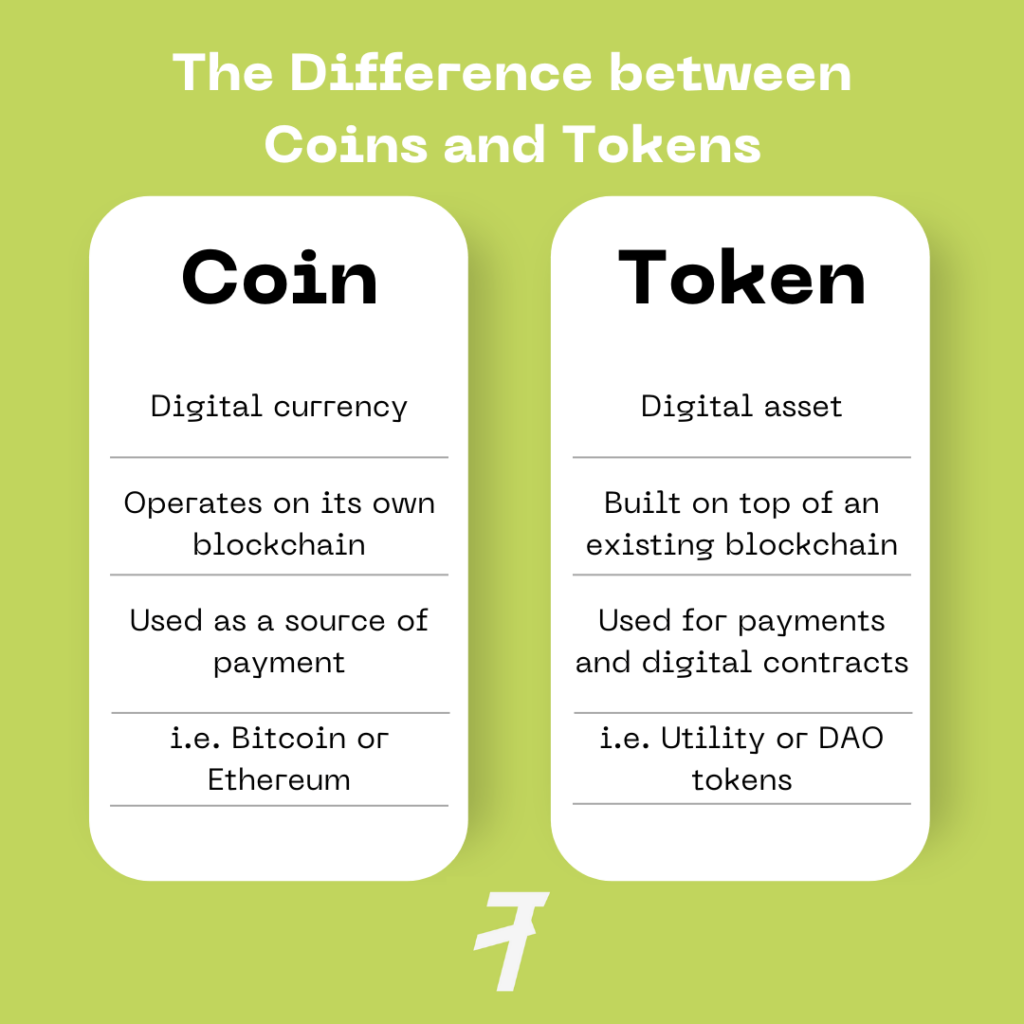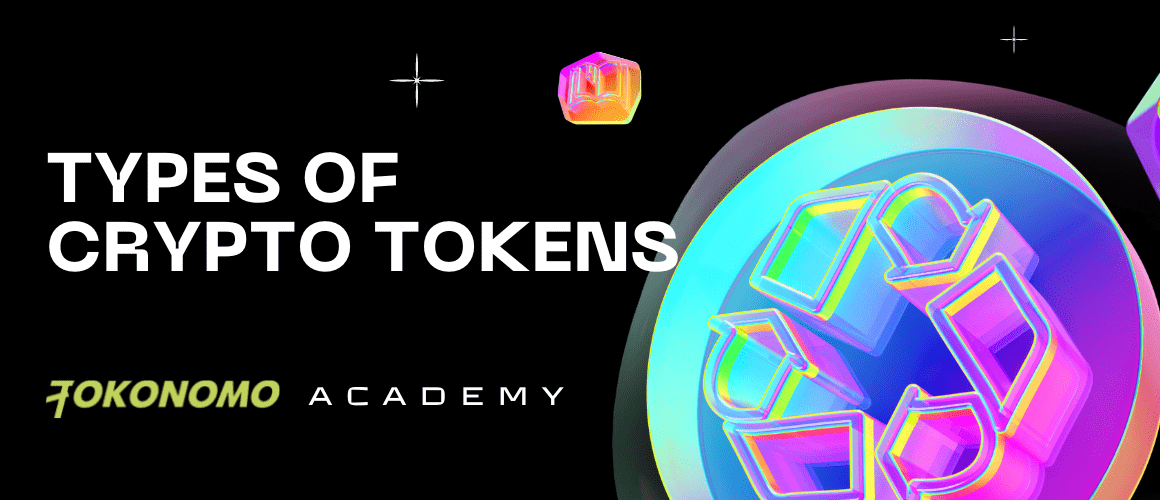As you may know, different cryptocurrencies operate on different blockchain networks and have different purposes. Based on this they might differ in code and token structure. In this article, we will go through the most popular types of crypto tokens and get to know what are the differences between them. Let’s start.
Differences between tokens and coins
Cryptocurrency coins, such as Bitcoin or Ethereum, are the native assets of a blockchain, whereas crypto tokens are produced by platforms and apps that are built on top of an existing blockchain.


Types of Crypto Tokens
Payment tokens, utility tokens, and security tokens are the three distinct categories into which crypto tokens have been divided.
Payment tokens are mostly used for carrying out financial transactions.
Utility tokens are frequently linked to decentralized applications and are used to provide digital access to applications and services via blockchain-based infrastructure. Utility coins can be used for a variety of things, including user incentives, staking governance, and voting rights.
Security tokens are assets, such as equity claims, and debts, that are represented as tokens on a blockchain. In terms of their economic function, security tokens are equivalent to financial derivatives, stocks, and bonds.
Token Standards
Smart contracts, serve as the fundamental building block of cryptocurrency tokens. Token ownership transfers and accounting for token holdings would both be tasks included in a token smart contract. Additionally, additional token-related capabilities like the minting and burning of tokens can be added thanks to programmable smart contracts. As a result, it is obvious how smart contracts control the usefulness of crypto tokens.
However, different blockchains like Ethereum, BSC (Binance Smart Chain), and others have their own names of crypto standards even though they operate almost the same way. In this article, we will go through the most popular token standards on the Ethereum network.
ERC-20
The ERC-20 token standard is arguably the most prevalent among the new crypto tokens that are currently being created. The universal token standard supports the approval of tokens for expenses by other on-chain third parties and provides the fundamental functionality for token transfer.
ERC-721
Particularly following the current NFT boom, the ERC-721 standard has emerged as one of the most popular trends in the cryptocurrency market. The non-fungible token standard offers features for monitoring unique assets. All cryptocurrency tokens built on the ERC-721 standard have individual ownership and atomic tracking. Mostly being used for NFTs and metaverse development.
ERC-1155
The Multi Token Standard, or ERC-1155, is a token standard that makes it possible to manage both fungible and non-fungible assets in a single contract. The standard, for instance, permits the simultaneous transfer of several token versions.
ERC-777
While maintaining backward compatibility with ERC-20 standards, the ERC-777 token standard aids in designing sophisticated functionality for interacting with tokens.
What token standard is being used for running IDOs?
Since IDOs (Initial DEX Offering) use decentralized exchanges to make the sale of tokens, projects use ERC-20 (or BEP-20 on Binance Smart Chain) tokens. It allows project owners to sell a percentage of tokens, easily transfer them to investors, and immediately open trading on DEX (decentralized exchange) without any issues.
Conclusion
The token type and standard used by the project depend on the goals that the project is trying to achieve. However, whether it’s a DeFi project, an NFT project, or any other, they all operate on the same smart contracts.
If you are a project owner and not sure about what type/standard of token you should use, you can use consulting services provided by Tokonomo to get advice or help with development!











